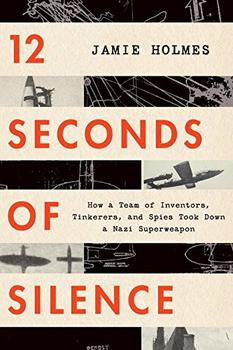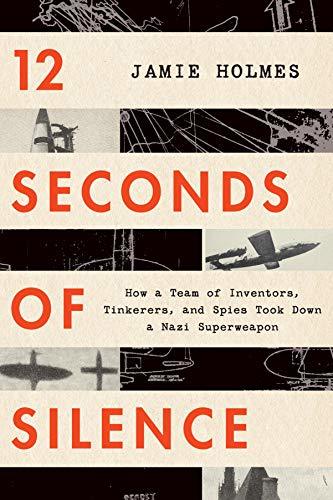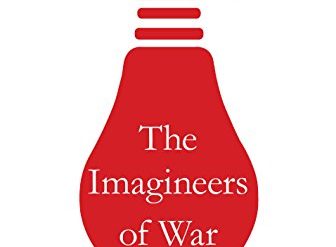
You can’t help knowing that the atomic bomb was a product of World War II and greatly influenced its outcome. If you’ve read a little, you’re aware that radar played a decisive role in the war as well, implemented both in the air, at sea, and on land. But it’s less likely you’ve heard about a third technological breakthrough that many military analysts and historians believe was equally important. It’s called the proximity fuse. “Known as the world’s first ‘smart’ weapon, the proximity fuse (or fuze) was a five-pound marvel of engineering, industry, and can-do spirit.” And its development and deployment is the subject of Jamie Holmes‘ impressive if idiosyncratic book, 12 Seconds of Silence.
This WWII technology breakthrough saved thousands of lives
Holmes’ book brings to the fore the role of the proximity fuse in defeating the first of the Nazi superweapons to surface: the V-1 “buzz bomb.” But the device had far broader applications and played a pivotal role in turning back the German advance in the Battle of the Philippine Sea (June 19-20, 1944) and the Battle of the Bulge (December 16, 1944 to January 25, 1945) as well. Here’s why the fuse was needed and how it worked:
12 Seconds of Silence: How a Team of Inventors, Tinkerers, and Spies Took Down a Nazi Superweapon by Jamie Holmes (2020) 492 pages @@@@ (4 out of 5)

- “In the early weeks of the Blitz, the ratio of fired [artillery] shells to downed aircraft—a metric described in RPB, or rounds per bird—was twenty thousand to one.” In other words, antiaircraft guns brought down Nazi planes only by the sheerest luck.
- The challenge, then, was to design and produce a gadget that would detonate an artillery shell only within striking distance of an attacking aircraft—not by hitting it directly but by exploding just closely enough for shrapnel to tear the plane apart. American and British scientists and engineers approached this challenge by testing a wide range of options. And the Americans found the one technological fix that proved to work.
- A micro-transmitter in the proximity fuse within the shell uses the shell’s body as an antenna and emits a continuous radio wave. As the shell approaches a reflecting object, the wave bouncing back triggers the detonation when it signals having reached an optimal distance from the target.
Bureaucratic hurdles and brickbats blocked this WWII technology breakthrough
The proximity fuse resulted from the work of a team of American scientists and engineers known as “Section T” led by physicist Merle Tuve. Holmes vividly relates the bureaucratic hurdles and brickbats that Tuve and his lieutenants suffered throughout the development of the fuse. The frustrations were constant amid the chaos of the American military establishment during the war and distractions from an unsuccessful parallel effort undertaken by the British. But the resistance didn’t end even after the fuse had been battle-tested and proven to be a godsend. When Section T delivered fuses to the Navy in the Pacific, “[s]ome gunners flatly refused to use the new ammunition,” and it took weeks for the new technology to be widely adopted.
The same happened on the other side of the world. “To the British, the American device remained an unproven technology” reflecting what might be characterized as the “not-invented-here” syndrome. And “[E]ven if the British had wanted to use Section T fuses [to defend London], they couldn’t” because they were prohibited from using it over land. The device was one of the most closely guarded secrets of the war, and military officials feared a downed fuse might somehow make its way to the Nazis. The resistance broke only when Winston Churchill personally intervened to order the gadget’s deployment in the battle against the V-1.
Astonishing results once the military fully deployed the new technology
Once British artillery was rushed to England’s southern coast and the ammunition equipped with the fuses, the impact was dramatic. The following table conveys a vivid sense of how dramatically the proximity fuse heightened the effectiveness of the artillery defending London against the V-1 during the two-and-a-half month period when the buzz bombs fell.
| When | How many guns with the fuse? | Proportion V-1s destroyed |
| Mid-to-late June | None | 9% |
| Early July | A few | 17% |
| Mid-July | Some | 24% |
| Mid-August | Most | 46% |
| Third week of August | All | 67% |
| Late August | All | 79% |
| August 28 | All | 97% |
During most of the time since World War II, articles and books written about the proximity fuse—and there’ve been many—have claimed that British technicians invented the device and passed it along to the Americans for production. That’s simply not true, and 12 Seconds of Silence corrects the record based on exhaustive historical research. Section T was a group of American scientists and engineers in one department of the U.S. Office of Scientific Research and Development, and it was they who were truly responsible for designing and building the gadget.

A large cast of colorful characters
There’s a large cast of compelling characters in this book, including several of the scientists and inventors in Section T whose later careers highlighted their brilliance. But Holmes’ story centers on just a handful of individuals:
- Merle Tuve (1901-82), the brilliant and short-tempered physicist who gave his name to Section T, driving a team that ultimately numbered more than a thousand scientists, engineers, and support staff
- Vannevar (sounds like achiever) Bush (1890-1974), who headed the U.S. Office of Scientific Research and Development (OSRD), the massive American military R&D enterprise in World War II that developed over two hundred new weapons and devices
- Col. Max Wachtel, the German army officer who managed the Nazis’ dreaded V-1 Vengeance-Weapon program
- R. V. Jones (1911-97), who spearheaded scientific espionage for the British and (sometimes) reported directly to Winston Churchill
- Private Edward (Ed) Hatch, an American soldier in the 130th Chemical Processing Company who was on the receiving end of the V-1 explosion in London that took the lives of 74 US soldiers; Hatch’s unit had been rushed to London because the British military leadership feared that the expected onslaught of V-1 rockets would carry chemical or biological warheads
- Jeannie Rousseau (1919-2017), the beautiful young French spy who gathered extensive knowledge about the German superweapon development program at Peenemünde and sent it through Resistance channels to MI6 in London
A book that’s about a lot more than a WWII technology breakthrough
I’ve referred to this book as idiosyncratic. That’s because Holmes’ account wanders over a wide swath of World War II history. It’s crammed with digressions—many of them fascinating, to be sure, but largely peripheral to the story of the proximity fuse and its deployment against the V-1. If Holmes had stuck to the story, he would not have provided such rich detail about the French Resistance, the Normandy landings, and the training of the 130th Chemical Processing Company in the US and their experience in London. This book would have been both shorter . . . and much less entertaining.
For additional reading
Check out:
- 5 top nonfiction books about World War II (plus many runners-up)
- The 10 best novels about World War II (with 30+ runners-up)
- 7 common misconceptions about World War II
- The 10 most consequential events of World War II
And you can always find my most popular reviews, and the most recent ones, plus a guide to this whole site, on the Home Page.



























